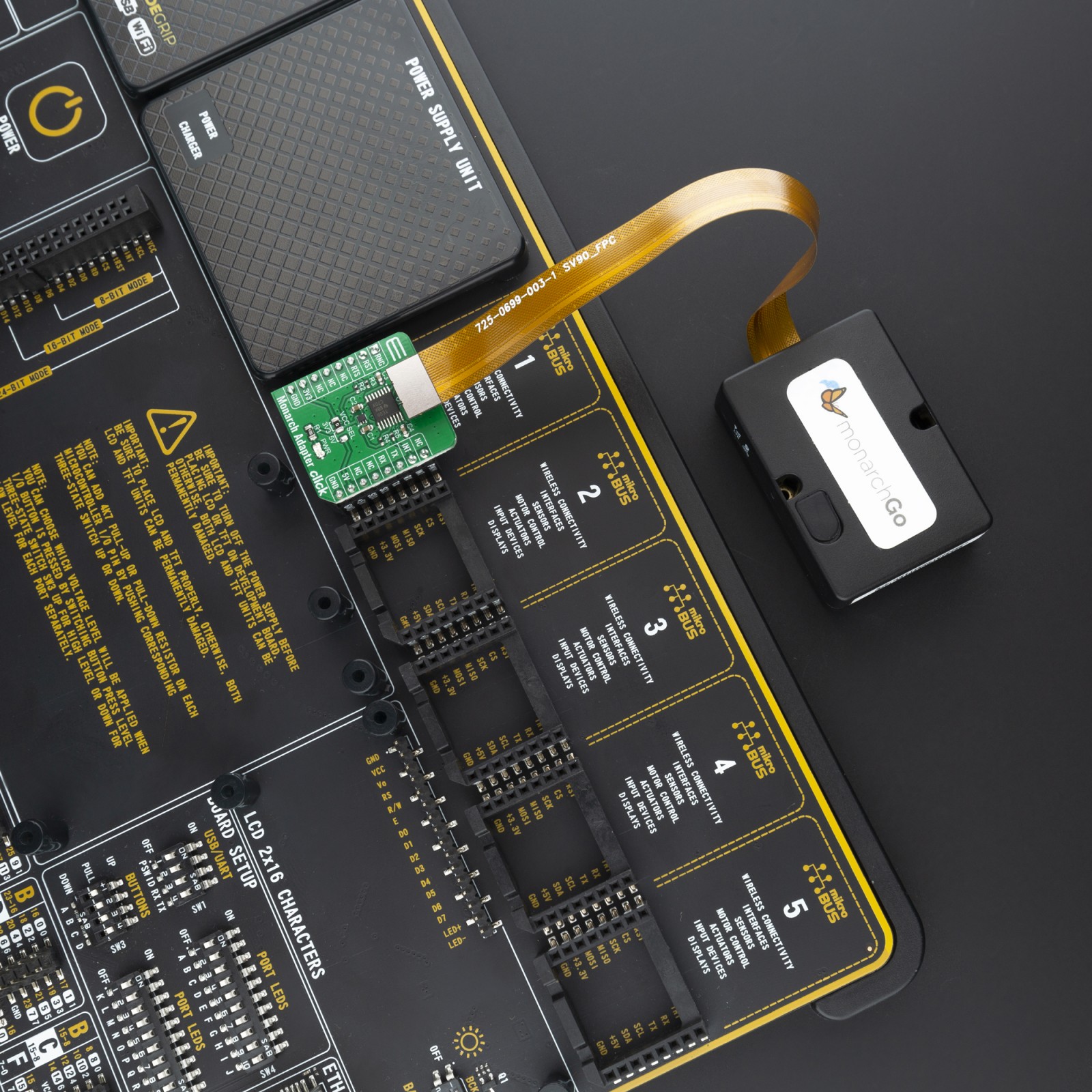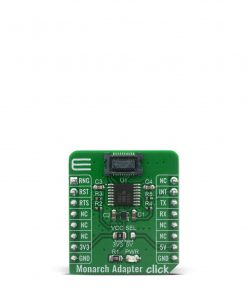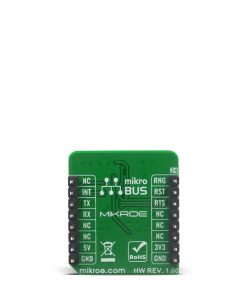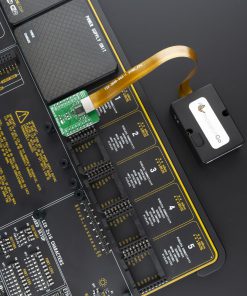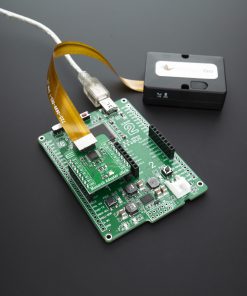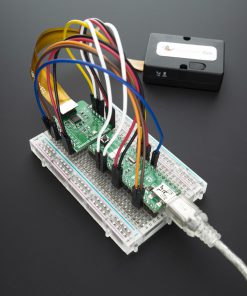Monarch Adapter Click
R355.00 ex. VAT
The Monarch Adapter Click is used to connect a compatible Monarch Go LTE-M modems from Sequans to your development board or prototype device. This Click adapter provide connection to cloud server with AT commands. The Monarch Go LTE-M modem component with embedded antenna is perfectly suited for a broad range of IoT applications, including telemetry, vending machines, agriculture sensor applications, asset and transportation trackers, hardware tools, and home security monitoring applications.
Monarch Adapter Click is supported by a mikroSDK compliant library, which includes functions that simplify software development. This Click board™ comes as a fully tested product, ready to be used on a system equipped with the mikroBUS™ socket.
Stock: Lead-time applicable.
| 5+ | R337.25 |
| 10+ | R319.50 |
| 15+ | R301.75 |
| 20+ | R290.39 |




